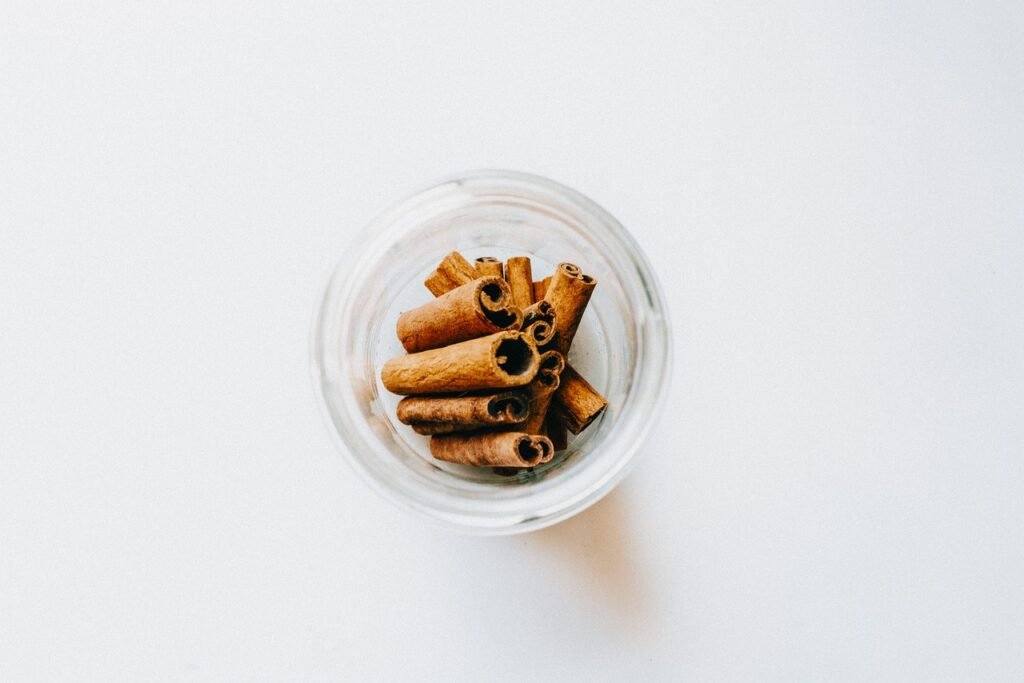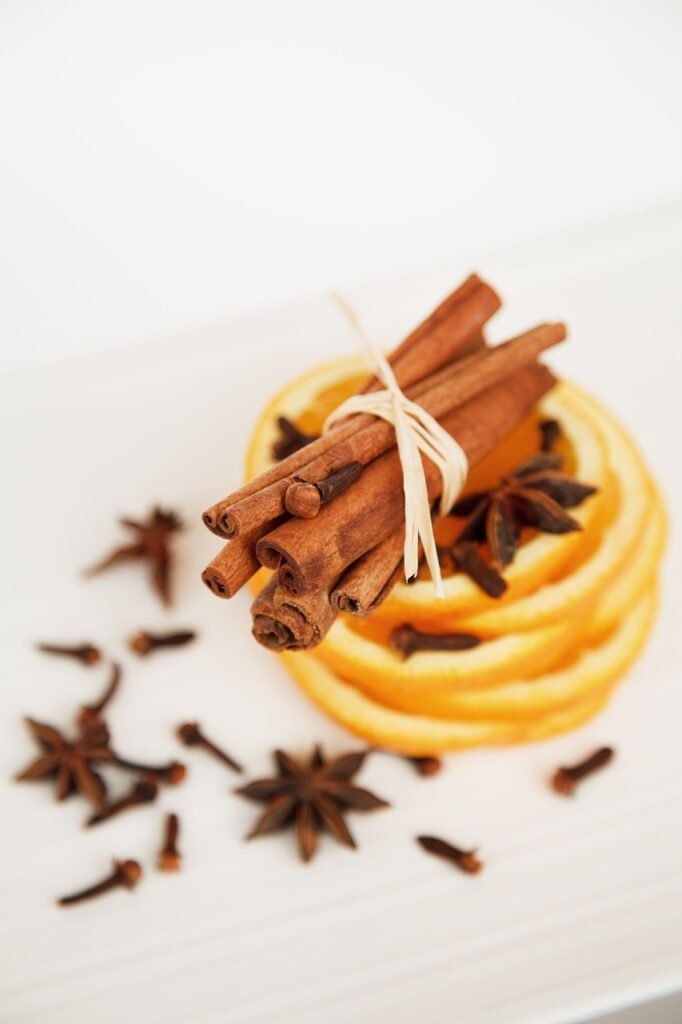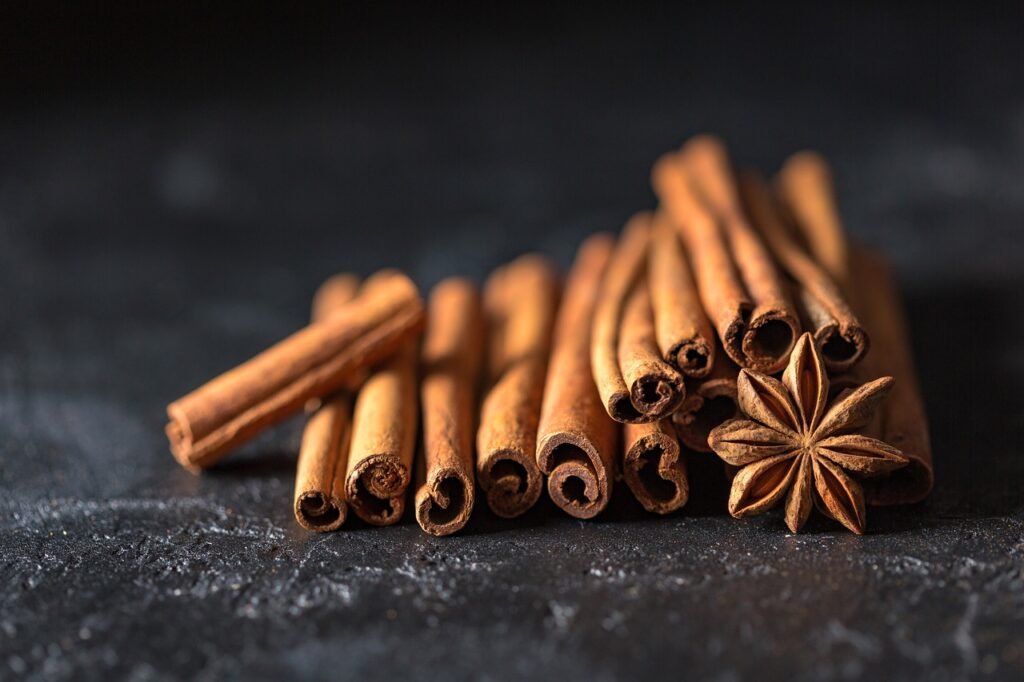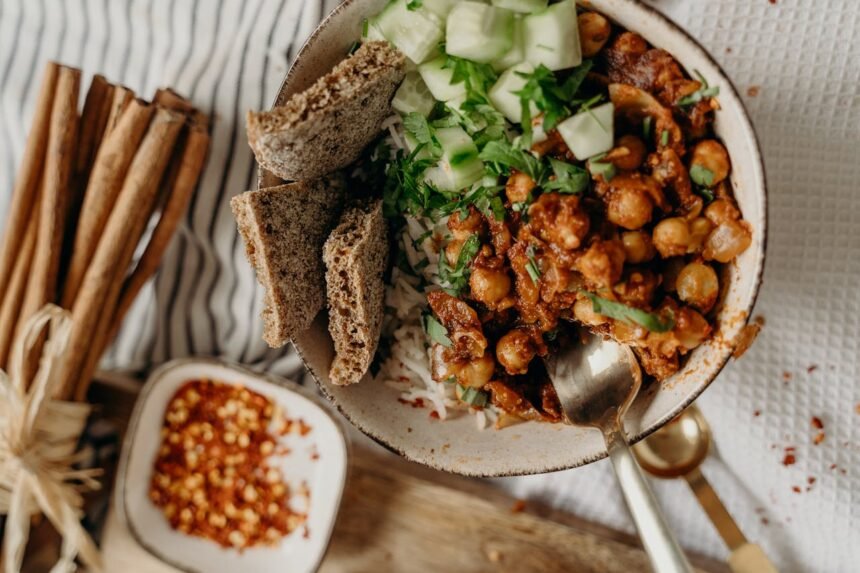Saigon cinnamon, also known as Vietnamese cinnamon, is a spice that truly packs a flavorful punch. This aromatic bark from the Cinnamomum loureiroi tree is prized for its intense, sweet-spicy taste and numerous potential health benefits.
Saigon cinnamon, a spice that truly packs a flavorful punch, has been captivating taste buds and enhancing culinary creations for centuries. This aromatic bark from the Cinnamomum loureiroi tree is prized not only for its intense, sweet-spicy taste but also for its numerous potential health benefits. In this comprehensive guide, we’ll explore the fascinating world of Saigon cinnamon, from its origins and unique characteristics to its culinary uses and health implications.
What is Saigon Cinnamon?
Saigon cinnamon, also known as Vietnamese cinnamon, is a species of evergreen tree indigenous to mainland Southeast Asia, particularly Vietnam. It belongs to the Cinnamomum genus and is more closely related to cassia than to Ceylon cinnamon. The scientific name for Saigon cinnamon is Cinnamomum loureiroi, named after the Portuguese Jesuit missionary and botanist João de Loureiro, who first described the species in the 18th century.
This variety of cinnamon is renowned for its high essential oil content, which ranges from 1-5%, with cinnamaldehyde comprising up to 25% of the essential oil. This high concentration of aromatic compounds is responsible for Saigon cinnamon’s robust flavor profile and potential health benefits. The bark of the Cinnamomum loureiroi tree is harvested and processed to produce the cinnamon we use in cooking and medicine.
Saigon cinnamon is primarily produced in Vietnam, both for domestic use and export. The trees are cultivated in several provinces, with Quang Nam and Yen Bai being notable production areas. The unique climate and soil conditions in these regions contribute to the distinctive characteristics of Saigon cinnamon.
In Vietnamese cuisine, Saigon cinnamon bark is a crucial ingredient in the broth used to make phở, a popular noodle soup dish that has gained international acclaim. Its versatility extends beyond traditional uses, making it a favorite among chefs and home cooks alike for its ability to enhance both sweet and savory dishes.
The history of Saigon cinnamon is intertwined with Vietnam’s complex past. During the French colonial period, cinnamon production was expanded and systematized, leading to increased exports. However, the Vietnam War disrupted production and trade. In recent decades, as Vietnam has opened up to international trade, Saigon cinnamon has once again found its way onto the global spice market, where it is highly valued for its superior flavor and aroma.
Saigon Cinnamon vs Ceylon Cinnamon: Understanding the Differences
When comparing Saigon cinnamon to Ceylon cinnamon, it’s important to note their distinct characteristics. While both are members of the Cinnamomum genus, they differ significantly in origin, flavor profile, and chemical composition.
- Origin:
Saigon cinnamon (Cinnamomum loureiroi) comes from Vietnam, while Ceylon cinnamon (Cinnamomum verum) originates from Sri Lanka, formerly known as Ceylon. This geographical difference contributes to the unique properties of each variety. - Flavor profile:
Saigon cinnamon has a stronger, more complex aroma and flavor compared to the delicate taste of Ceylon cinnamon. It is often described as spicier and sweeter, with a more pronounced warmth. Ceylon cinnamon, on the other hand, has a milder, more subtle flavor with floral notes. - Essential oil content:
Saigon cinnamon contains 1-5% essential oil, which is significantly higher than Ceylon cinnamon. This higher concentration contributes to its more potent flavor and aroma. - Cinnamaldehyde content:
Saigon cinnamon has the highest content of cinnamaldehyde among all cinnamon species, contributing to its bold flavor. Cinnamaldehyde is the compound primarily responsible for cinnamon’s characteristic taste and smell. - Coumarin levels:
Saigon cinnamon contains higher levels of coumarin, a compound that may be harmful in large doses, compared to Ceylon cinnamon. This is an important consideration for those who consume cinnamon regularly or in large quantities. - Appearance:
Saigon cinnamon bark is typically thicker and darker than Ceylon cinnamon. When ground, Saigon cinnamon tends to be a darker reddish-brown color compared to the lighter tan of Ceylon cinnamon. - Texture:
Ceylon cinnamon sticks are composed of thin, delicate layers that can be easily ground, while Saigon cinnamon sticks are harder and more difficult to grind at home. - Price:
Generally, Saigon cinnamon is less expensive than Ceylon cinnamon due to its greater availability and easier cultivation.
While both types of cinnamon offer unique flavors and potential health benefits, it’s crucial to be aware of their differences, especially when considering dietary supplements or medicinal uses. The choice between Saigon and Ceylon cinnamon often comes down to personal preference in flavor and intended use.

Health Benefits of Saigon Cinnamon
Saigon cinnamon is not just a flavorful spice; it also boasts several potential health benefits. While more research is needed to fully understand its effects on human health, preliminary studies and traditional uses suggest that Saigon cinnamon may offer the following benefits:
- Anti-inflammatory properties:
The cinnamaldehyde and eugenol compounds in Saigon cinnamon have antioxidant effects that may help fight inflammation in the body. Chronic inflammation is linked to various health issues, including heart disease, cancer, and autoimmune disorders. - Blood sugar regulation:
Some studies suggest that Saigon cinnamon may help lower blood sugar levels, making it potentially beneficial for people with diabetes or those at risk of developing the condition. Cinnamon may improve insulin sensitivity and glucose uptake by cells. - Antimicrobial and antibacterial effects:
Saigon cinnamon has shown promise in fighting various types of bacteria and microbes. This property could be beneficial in food preservation and potentially in treating certain infections. - Cognitive function:
Some research indicates that cinnamon may help improve cognitive function and memory. The antioxidants in cinnamon may protect brain cells from oxidative stress and inflammation, potentially reducing the risk of neurodegenerative diseases. - Heart health:
Cinnamon may help reduce risk factors associated with heart disease, such as high cholesterol and blood pressure. Some studies have shown that cinnamon can lower total cholesterol, LDL cholesterol, and triglyceride levels while increasing HDL (good) cholesterol. - Weight management:
While not a magic solution for weight loss, cinnamon may help in weight management by regulating blood sugar levels and reducing cravings. - Digestive health:
Traditionally, cinnamon has been used to alleviate digestive discomfort. It may help reduce bloating, gas, and stomach cramps. - Antioxidant properties:
Saigon cinnamon is rich in antioxidants, which help protect the body from damage caused by free radicals. This may contribute to overall health and potentially reduce the risk of chronic diseases. - Potential anti-cancer effects:
While research is still in early stages, some studies suggest that compounds in cinnamon may have anti-cancer properties, particularly against colon cancer. - Oral health:
The antimicrobial properties of cinnamon may help fight bacteria in the mouth, potentially reducing bad breath and tooth decay.
While these potential benefits are promising, it’s important to note that more research is needed to fully understand the effects of Saigon cinnamon on human health. Many studies have been conducted on animals or in vitro, and more human trials are necessary to confirm these benefits.
As with any dietary supplement, it’s best to consult with a healthcare professional before incorporating large amounts of Saigon cinnamon into your diet, especially if you have existing health conditions or are taking medications.
How to Use Saigon Cinnamon in Cooking
Saigon cinnamon’s bold flavor makes it a versatile spice in the kitchen. Its intense, sweet-spicy taste can enhance a wide variety of dishes, from sweet treats to savory meals. Here are some ways to incorporate Saigon cinnamon into your cooking:
- Baking:
Add ground Saigon cinnamon to muffins, cookies, pies, and quick breads for a warm, spicy flavor. It pairs particularly well with apples, pears, and other fruits in desserts. - Beverages:
Use Saigon cinnamon sticks to infuse flavor into hot chocolate, mulled wine, or homemade chai tea. You can also add a pinch of ground cinnamon to your coffee for a flavorful twist. - Savory dishes:
Incorporate Saigon cinnamon into curries, marinades, or stews for added depth and complexity. It works well in Middle Eastern, North African, and Asian cuisines. - Breakfast foods:
Sprinkle ground Saigon cinnamon on oatmeal, yogurt, or toast for a flavorful start to your day. It can also be added to pancake or waffle batter for a warm, spicy note. - Spice blends:
Include Saigon cinnamon in homemade spice blends for a unique twist on traditional seasonings. It’s a key ingredient in many spice mixes, including Chinese five-spice powder and garam masala. - Roasted vegetables:
Toss root vegetables like sweet potatoes, carrots, or squash with a bit of Saigon cinnamon before roasting for a delicious caramelized flavor. - Meat dishes:
Use Saigon cinnamon in rubs for pork, lamb, or chicken. It can add depth to barbecue sauces and marinades. - Rice dishes:
Add a cinnamon stick to the pot when cooking rice for a subtle, aromatic flavor. This works particularly well with basmati or jasmine rice. - Fruit compotes:
Simmer fruits like apples, pears, or berries with a cinnamon stick for a simple, flavorful dessert or topping. - Smoothies:
Add a pinch of ground Saigon cinnamon to your smoothies for a warm, spicy note that complements fruits and nuts.
Remember that Saigon cinnamon has a stronger flavor than other varieties, so you may need to adjust the amount used in recipes accordingly. Start with a small amount and taste as you go, adding more if needed.
Saigon Cinnamon: Nutritional Profile and Precautions
Saigon cinnamon is not only flavorful but also nutritious. However, it’s important to be aware of its nutritional content and potential side effects, especially when consumed in large quantities.
Nutritional Profile (per 1 teaspoon/2.6g):
- Calories: 6
- Protein: 0g
- Fat: 0g
- Carbohydrates: 2g
- Fiber: 1g
- Sugar: 0g
Saigon cinnamon is also a good source of manganese and contains small amounts of calcium, iron, and vitamin K. It’s rich in antioxidants, particularly polyphenols, which contribute to its potential health benefits.
Precautions:
While Saigon cinnamon is generally safe when consumed in small amounts as a spice, there are some precautions to consider:
- Coumarin content:
Saigon cinnamon contains high levels of coumarin, a compound that may cause liver damage in large doses. It’s recommended to limit intake to no more than 1 teaspoon (2.5 grams) per day. People with liver disease should be particularly cautious. - Medication interactions:
Saigon cinnamon may interact with certain medications, particularly those that affect blood sugar levels or liver function. It may also interact with blood thinners due to its coumarin content. - Pregnancy and breastfeeding:
There isn’t enough reliable information about the safety of Saigon cinnamon during pregnancy or breastfeeding. It’s best to consult with a healthcare professional before use. - Allergies:
Some people may be allergic to cinnamon. Symptoms can range from mild irritation to severe allergic reactions. - Blood sugar effects:
While cinnamon may help lower blood sugar, this effect could be problematic for people with diabetes who are taking medications to control their blood sugar levels. - Oral irritation:
Consuming large amounts of cinnamon or using cinnamon-flavored products frequently may cause irritation in the mouth or lips in some people. - Respiratory issues:
Inhaling cinnamon powder can irritate the lungs and potentially cause breathing problems, especially in people with asthma or other respiratory conditions. - Skin irritation:
Applying cinnamon oil or powder directly to the skin may cause irritation or allergic reactions in some people.
As with any dietary supplement or significant change in diet, it’s always best to consult with a healthcare professional before incorporating large amounts of Saigon cinnamon into your routine. This is particularly important if you have existing health conditions, are pregnant or breastfeeding, or are taking medications.

When using Saigon cinnamon sticks, they can be added whole to dishes and removed before serving, or ground fresh as needed. Whole sticks can be reused several times before losing their flavor.
For the best flavor, it’s recommended to buy whole Saigon cinnamon sticks and grind them as needed. Pre-ground cinnamon can lose its potency over time, so it’s best to use it within six months to a year of purchase.
Experimenting with Saigon cinnamon in your cooking can open up a world of flavor possibilities. Its versatility allows it to enhance both sweet and savory dishes, making it a valuable addition to any spice cabinet.
Storing and Preserving Saigon Cinnamon
To maintain the quality and potency of Saigon cinnamon, proper storage is essential. Here are some tips for storing and preserving your Saigon cinnamon:
- Airtight containers:
Store Saigon cinnamon in airtight containers to protect it from moisture and air, which can degrade its flavor and aroma. - Cool, dark place:
Keep your cinnamon in a cool, dark place away from direct sunlight and heat sources. A pantry or cupboard is ideal. - Whole vs. ground:
Whole cinnamon sticks retain their flavor and aroma longer than ground cinnamon. Consider buying whole sticks and grinding them as needed. - Refrigeration:
While not necessary, storing cinnamon in the refrigerator can help extend its shelf life, especially in humid climates. - Avoid moisture:
Always use a dry spoon when scooping out cinnamon to prevent introducing moisture into the container. - Check for freshness:
Cinnamon should have a strong, sweet aroma. If the scent is weak or the color has faded, it may be past its prime. - Shelf life:
Properly stored, ground Saigon cinnamon can last up to a year, while whole sticks can remain potent for up to two years.
By following these storage guidelines, you can ensure that your Saigon cinnamon remains flavorful and aromatic for as long as possible.
Conclusion
Saigon cinnamon is a flavorful spice that offers both culinary versatility and potential health benefits. Its rich aroma and intense taste make it a favorite among chefs and home cooks alike. While it shares similarities with other cinnamon varieties, Saigon cinnamon’s unique properties set it apart, particularly its high essential oil and cinnamaldehyde content.
From enhancing the flavor of baked goods to adding depth to savory dishes, Saigon cinnamon is a spice that truly packs a punch. Its potential health benefits, including anti-inflammatory properties and blood sugar regulation, make it an intriguing subject for further research.
However, it’s important to use Saigon cinnamon judiciously and be aware of its high coumarin content. As with any dietary supplement, moderation is key, and it’s always best to consult with a healthcare professional before making significant changes to your diet.
What is Saigon Cinnamon?
Saigon cinnamon is an evergreen tree indigenous to mainland Southeast Asia, specifically Vietnam[1]. It belongs to the Cinnamomum genus and is more closely related to cassia than to Ceylon cinnamon. The scientific name for Saigon cinnamon is Cinnamomum loureiroi, named after the botanist João de Loureiro[1].
This variety of cinnamon is known for its high essential oil content, ranging from 1-5%, with 25% cinnamaldehyde in the essential oil[1]. This high concentration of aromatic compounds contributes to its robust flavor profile and potential health benefits. Saigon cinnamon is primarily produced in Vietnam, both for domestic use and export[1].
In Vietnamese cuisine, Saigon cinnamon bark is a crucial ingredient in the broth used to make phở, a popular noodle soup dish[1]. Its versatility extends beyond traditional uses, making it a favorite among chefs and home cooks alike for its ability to enhance both sweet and savory dishes.
Saigon Cinnamon vs Ceylon Cinnamon: Understanding the Differences
When comparing Saigon cinnamon to Ceylon cinnamon, it’s important to note their distinct characteristics:
- Origin: Saigon cinnamon comes from Vietnam, while Ceylon cinnamon originates from Sri Lanka[1][3].
- Flavor profile: Saigon cinnamon has a stronger, more complex aroma and flavor compared to the delicate taste of Ceylon cinnamon[3].
- Essential oil content: Saigon cinnamon contains 1-5% essential oil, which is higher than Ceylon cinnamon[1].
- Cinnamaldehyde content: Saigon cinnamon has the highest content of cinnamaldehyde among all cinnamon species, contributing to its bold flavor[3].
- Coumarin levels: Saigon cinnamon contains higher levels of coumarin, a compound that may be harmful in large doses, compared to Ceylon cinnamon[1][4].
While both types of cinnamon offer unique flavors and potential health benefits, it’s crucial to be aware of their differences, especially when considering dietary supplements or medicinal uses.
Health Benefits of Saigon Cinnamon
Saigon cinnamon is not just a flavorful spice; it also boasts several potential health benefits:
- Anti-inflammatory properties: The cinnamaldehyde and eugenol compounds in Saigon cinnamon have antioxidant effects that may help fight inflammation[2].
- Blood sugar regulation: Some studies suggest that Saigon cinnamon may help lower blood sugar levels, making it potentially beneficial for people with diabetes[2][4].
- Antimicrobial and antibacterial effects: Saigon cinnamon has shown promise in fighting various types of bacteria and microbes[4].
- Cognitive function: Some research indicates that cinnamon may help improve cognitive function and memory[2].
- Heart health: Cinnamon may help reduce risk factors associated with heart disease, such as high cholesterol and blood pressure[2].
While these potential benefits are promising, it’s important to note that more research is needed to fully understand the effects of Saigon cinnamon on human health. As with any dietary supplement, it’s best to consult with a healthcare professional before incorporating large amounts of Saigon cinnamon into your diet.
How to Use Saigon Cinnamon in Cooking
Saigon cinnamon’s bold flavor makes it a versatile spice in the kitchen. Here are some ways to incorporate it into your cooking:
- Baking: Add ground Saigon cinnamon to muffins, cookies, pies, and quick breads for a warm, spicy flavor[2].
- Beverages: Use Saigon cinnamon sticks to infuse flavor into hot chocolate, mulled wine, or homemade chai tea[2].
- Savory dishes: Incorporate Saigon cinnamon into curries, marinades, or stews for added depth and complexity[2].
- Breakfast foods: Sprinkle ground Saigon cinnamon on oatmeal, yogurt, or toast for a flavorful start to your day[2].
- Spice blends: Include Saigon cinnamon in homemade spice blends for a unique twist on traditional seasonings.
Remember that Saigon cinnamon has a stronger flavor than other varieties, so you may need to adjust the amount used in recipes accordingly.
Saigon Cinnamon: Nutritional Profile and Precautions
Saigon cinnamon is not only flavorful but also nutritious. Here’s a brief overview of its nutritional content and some precautions to keep in mind:
Nutritional Profile (per 1 teaspoon/2.6g):
- Calories: 6
- Protein: 0g
- Fat: 0g
- Carbohydrates: 2g
- Fiber: 1g
- Sugar: 0g[2]
Saigon cinnamon is also a good source of manganese and contains small amounts of calcium, iron, and vitamin K[2].
Precautions:
While Saigon cinnamon is generally safe when consumed in small amounts as a spice, there are some precautions to consider:
- Coumarin content: Saigon cinnamon contains high levels of coumarin, which may cause liver damage in large doses. It’s recommended to limit intake to no more than 1 teaspoon (2.5 grams) per day[1][4].
- Medication interactions: Saigon cinnamon may interact with certain medications, particularly those that affect blood sugar levels or liver function[4][5].
- Pregnancy and breastfeeding: There isn’t enough reliable information about the safety of Saigon cinnamon during pregnancy or breastfeeding. It’s best to consult with a healthcare professional before use[5].
- Liver disease: If you have liver disease, avoid taking Saigon cinnamon in amounts larger than those typically found in food[5].
As with any dietary supplement or significant change in diet, it’s always best to consult with a healthcare professional before incorporating large amounts of Saigon cinnamon into your routine.

Conclusion
Saigon cinnamon is a flavorful spice that offers both culinary versatility and potential health benefits. Its rich aroma and intense taste make it a favorite among chefs and home cooks alike. While it shares similarities with other cinnamon varieties, Saigon cinnamon’s unique properties set it apart, particularly its high essential oil and cinnamaldehyde content.
From enhancing the flavor of baked goods to adding depth to savory dishes, Saigon cinnamon is a spice that truly packs a punch. However, it’s important to use it judiciously and be aware of its high coumarin content. By understanding its characteristics and potential benefits, you can make the most of this aromatic spice in your culinary adventures while being mindful of its effects on health.
FAQs about Saigon Cinnamon
- What makes Saigon cinnamon different from other types of cinnamon?
Saigon cinnamon has a higher essential oil content and cinnamaldehyde concentration, giving it a stronger flavor and aroma compared to other cinnamon varieties[1][3]. - Is Saigon cinnamon safe to consume daily?
While Saigon cinnamon is generally safe in small amounts, it’s recommended to limit intake to no more than 1 teaspoon (2.5 grams) per day due to its high coumarin content[4]. - Can Saigon cinnamon help with blood sugar control?
Some studies suggest that Saigon cinnamon may help lower blood sugar levels, but more research is needed to confirm its effects[2][4]. - How should Saigon cinnamon be stored?
Store Saigon cinnamon in an airtight container in a cool, dry place away from direct sunlight to preserve its flavor and aroma. - Can Saigon cinnamon be used interchangeably with Ceylon cinnamon in recipes?
While they can be used interchangeably, Saigon cinnamon has a stronger flavor, so you may need to adjust the amount used in recipes.
| Characteristic | Saigon Cinnamon | Ceylon Cinnamon |
|---|---|---|
| Origin | Vietnam | Sri Lanka |
| Flavor | Strong, spicy | Mild, delicate |
| Essential Oil | 1-5% | Lower |
| Coumarin | High | Low |
| Price | Less expensive | More expensive |






